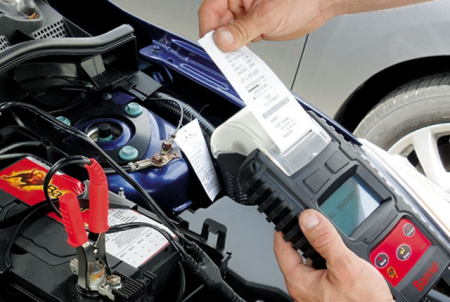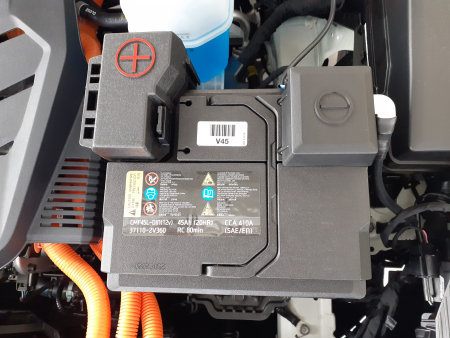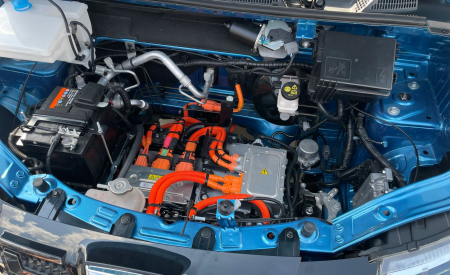CHECKING THE 12V ON-BOARD BATTERY IN THE E-CAR
VOLTAGE TESTER DISPLAYS 00.00V!
Is this real? YES and here immediately the explanation of the main cause!

PROBLEM: Test device measures 00.00V during battery check.
CAUSE: Some 12V on-board batteries (sometimes lithium-ion batteries LiFePO4 or lead-acid technology) have a built-in BMS battery management system in the electric car, which is able to shut down internally in case of a dangerous situation. These include OVER-voltage, OVER-temperature and OVER-current (including short-circuiting the terminals by means of clamps).
SOLUTION: In these cases, a "reset" is required, not a hasty battery change!

VARIANT 1: Disconnect the battery when installed, wait approx. 5 minutes and reconnect. The battery management system is "reset" in most cases. Always disconnect the negative terminal first! Later, when connecting, proceed in reverse order, i.e. first attach the red cable to the positive terminal, then attach the black cable to the negative terminal.
Caution! When disconnecting the battery without an external power supply, the on-board computer of some electric car models loses the values of the trip meters A and B and thus also everything that is connected to them.

VARIANT 2 if no success with variant 1: To "reset" (reset) it is best to remove the battery and keep it in a cool, safe place for 5 minutes without anything connected to it. Then apply approx. 14.60 - max. 14.80V voltage to the battery terminals, ideally using a voltage-regulated automatic charger. After approx. 5 minutes, remove the voltage from the terminals and check the battery voltage again; this should be restored. Reinstall and connect the battery after "reset". To connect the "reset" battery, be sure to proceed in reverse order. As already informed above. IMPORTANT: Reconnect the on-board battery with the high-voltage battery, usually a plug connection has to be pressed together.
Otherwise, the general rule is: Hands off high-voltage components and cables (recognisable by their orange colour)! This is reserved for automotive specialists with the appropriate equipment and additional qualifications (HV high-voltage training). No matter whether it is non-electrotechnical, electrotechnical work or electrotechnical work under voltage (often with nominal voltages of 288 to over 800V)!
More articles on this topic

